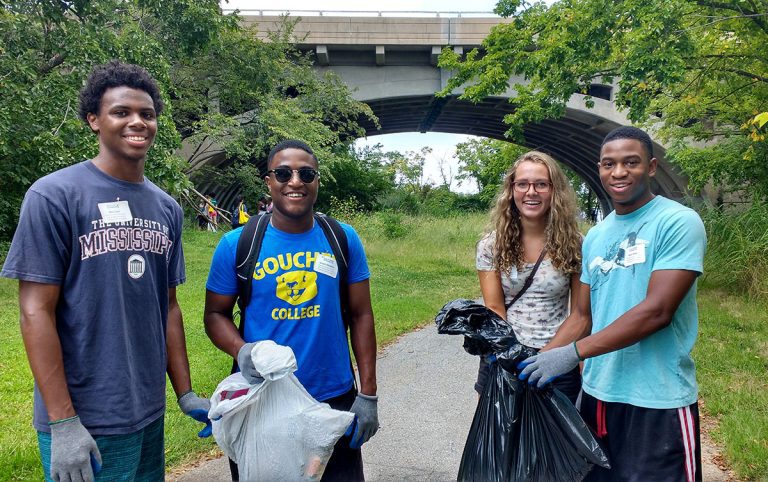64,000 Rain Gardens for the Chesapeake Bay?
Do rain gardens really work to protect aquatic wildlife?
Researchers at Washington State University decided to find out for sure, and set up a pretty simple but clever test: salmon. They collected storm water from around the Seattle region and filtered some of it through soil similar to that in a typical rain garden. They filled aquariums with water, half with unfiltered storm water and half with filtered water.
Within 12 hours, all the coho salmon in the plain storm water were dead.
In the water filtered by a rain garden, the fish were doing just fine.
And so, Washington State University and Stewardship Partners in Seattle started a campaign to install 12,000 rain gardens in the Puget Sound Region by 2016.
Here in Baltimore. we are working hard to help people install rain gardens. We’ve seen first hand how practical and effective they can be. They are a low-maintenance way to improve the beauty of your yard and reduced polluted storm water runoff.
But our watershed area is just 194 square miles. a fraction of the 12,000 square miles in the Puget Sound watershed and the even more massive 64,000 square miles of the Chesapeake Bay watershed.
Will we see 64,000 rain gardens – one per square mile, the same rate as the goal in the Puget Sound – installed in the Chesapeake Bay watershed in the next three years? Maybe not.
But Blue Water Baltimore is committed to make sure that people in Baltimore installs rain gardens to help protect our rivers, streams, and Harbor from polluted storm water runoff.
The best way for you to learn whether a rain garden might work for you is to sign up for a free water audit and attend one of our upcoming rain garden workshops.
View BWB Watersheds in a larger map

